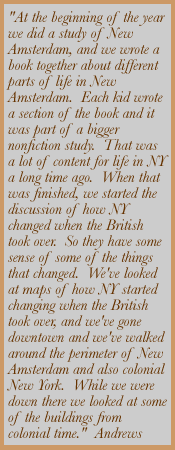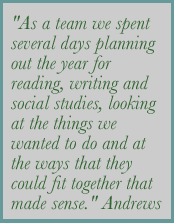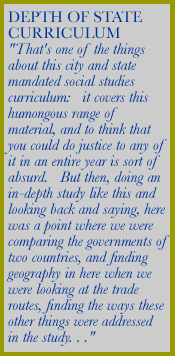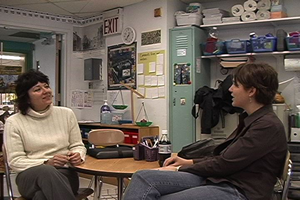 |
 |
  |
![]()
|
The school shapes its curriculum to address state standards in each subject area. It seeks to meet those standards by developing active, project-based learning experiences that are developmentally-appropriate, meaningful, and of interest to the students and that attend to all aspects - social/emotional as well as cognitive - of children's growth. To plan for these projects, two different kinds of teacher groups meet regularly: |
|
• Discipline-based cross-grade teams, made up of one teacher from each grade in the school, which monitor both the content and pedagogy for each grade, making sure to weave state standards into the work; |
||
Both of these teams meet regularly to review what teachers have done in their classrooms, to examine students' group responses and individual work, and to make adjustments to their teaching based on their collective reflections. Through these different structures, the teachers seek to design learning experiences responsive to the students' needs and that have coherence within and across grades. As part of their work in these teams, teachers at the school also strive to integrate their teaching and provide connections across different subject areas. For example, at the same time that Andrews' students were working on the Colonial Perspectives they were also reading historical fiction (of the same colonial time period) and studying persuasive writing, both of which contributed greatly to the Colonial Perspectives unit. Andrews and Falk talk about the overlap of the social studies unit with other subjects (watch video).YEAR-LONG SCOPE 1. Students will: use a variety of intellectual skills to demonstrate their understanding of major ideas, eras, themes, developments, and turning points in the history of the United States and New York. KEY IDEA I KEY IDEA II KEY IDEA III
|
 Andrews and Falk discuss the connections between the social studies unit and other subjects (watch video).  |
|
 More: watch video clip of Andrews and Falk's conversation. |
||
